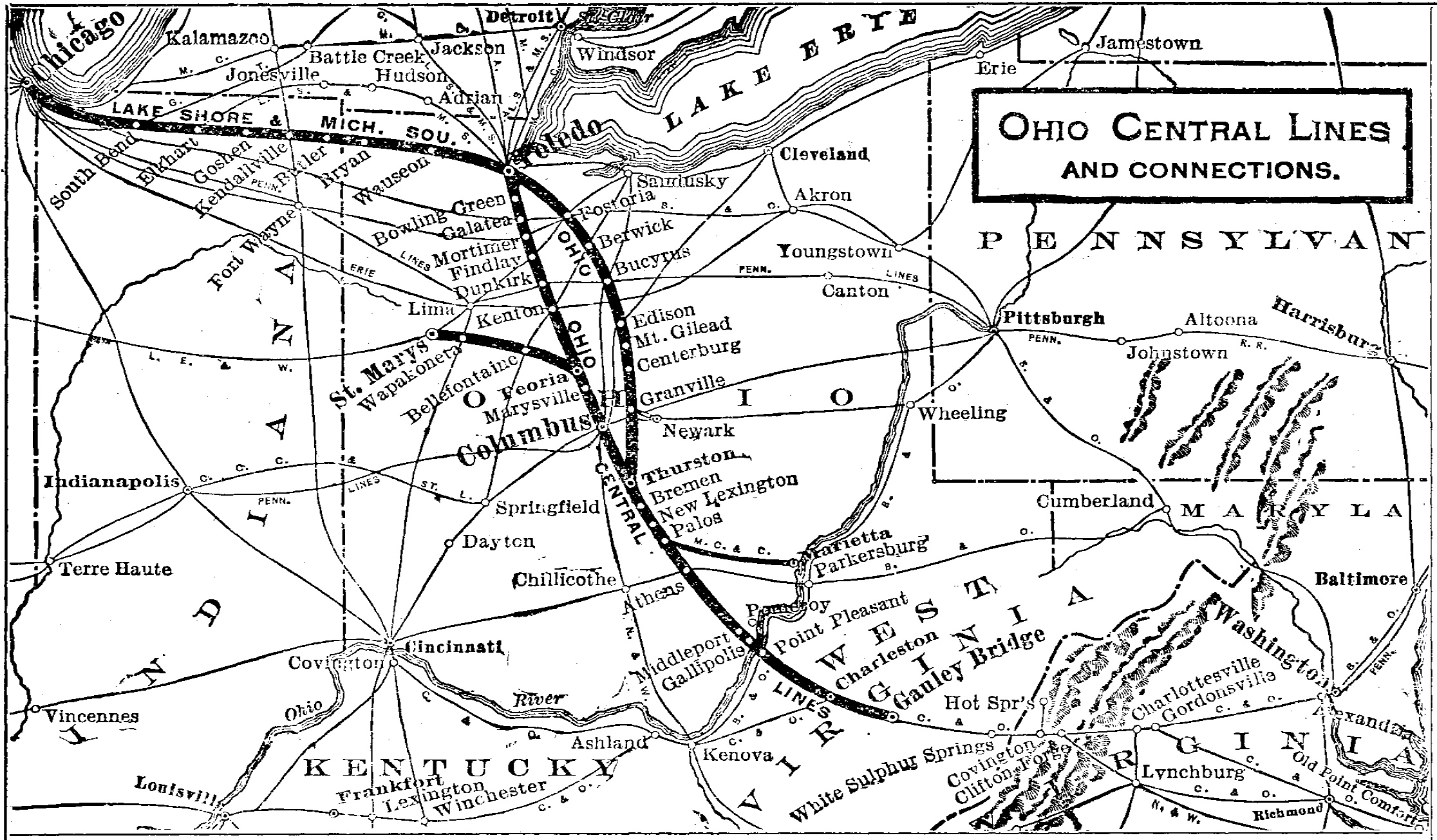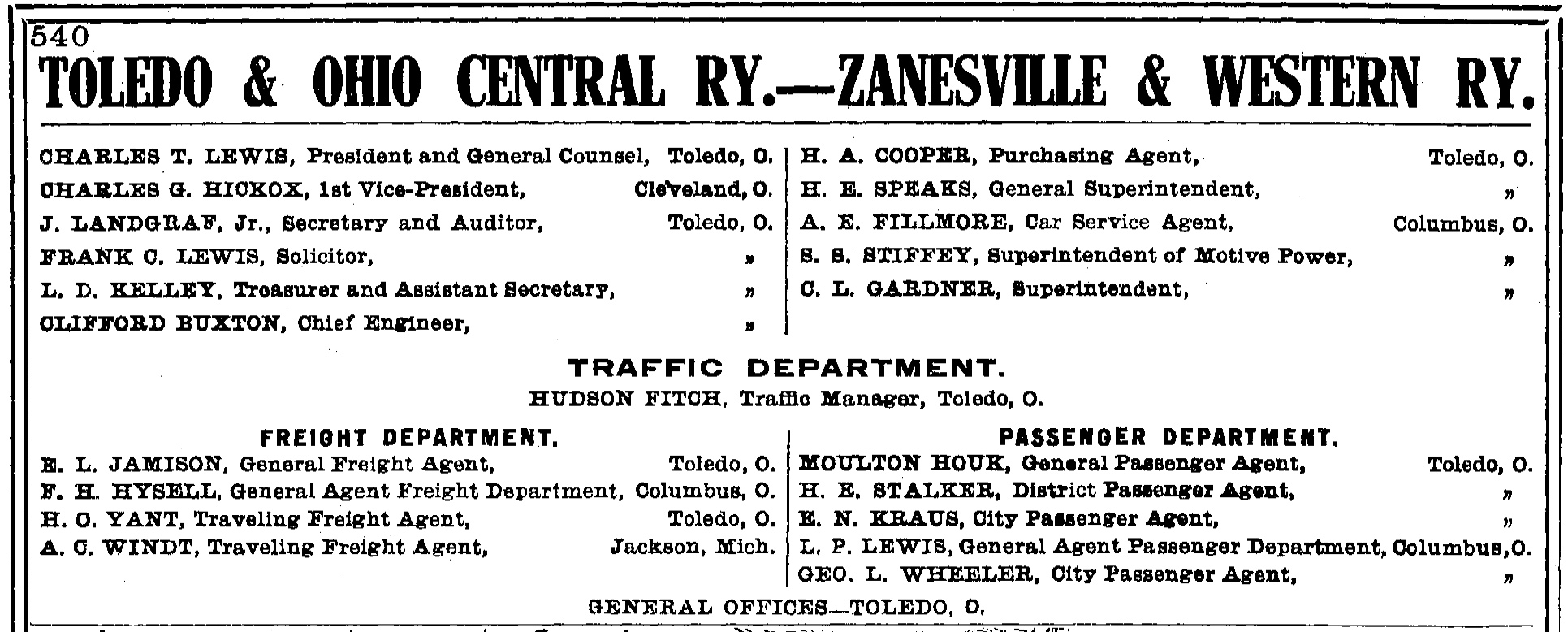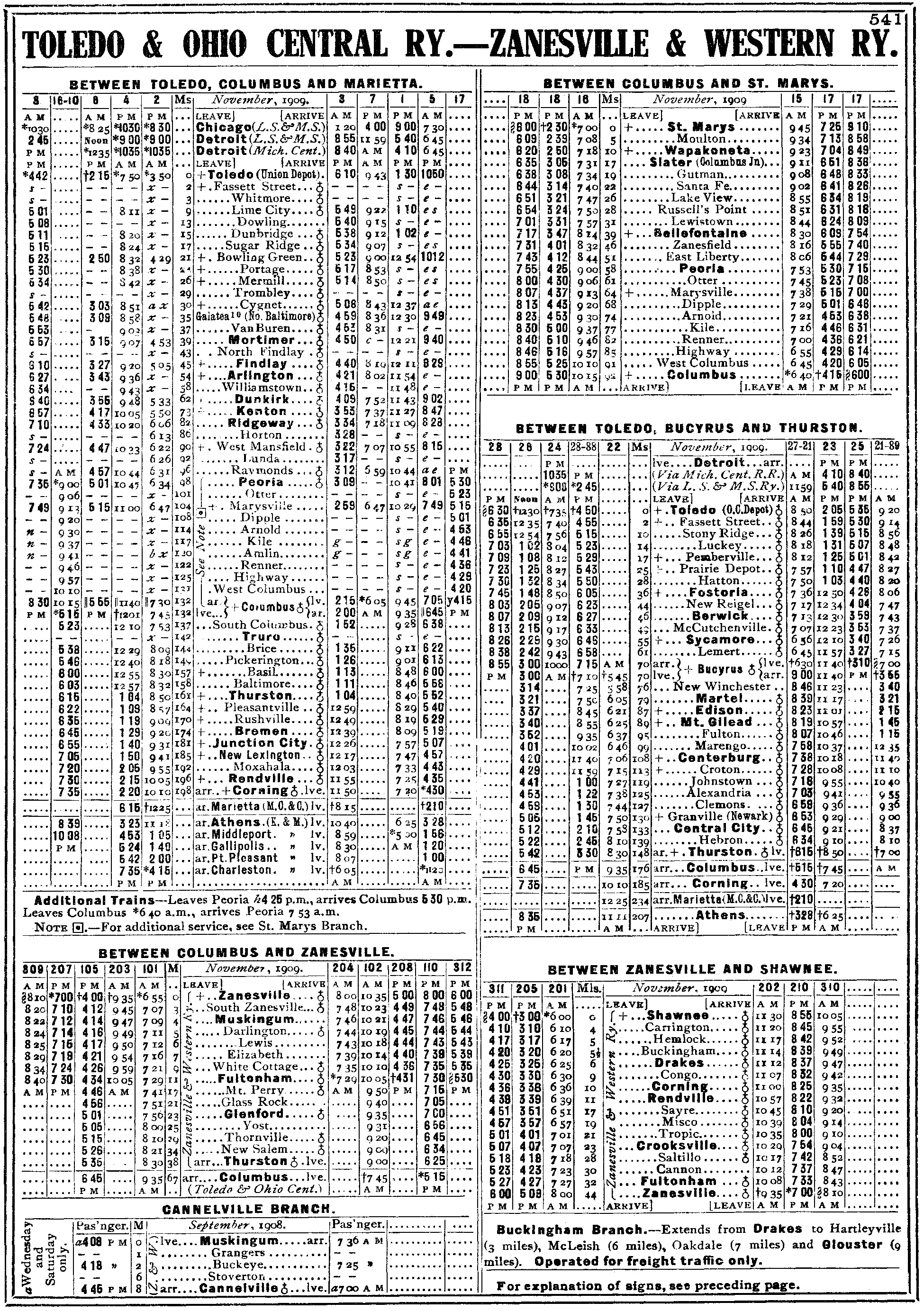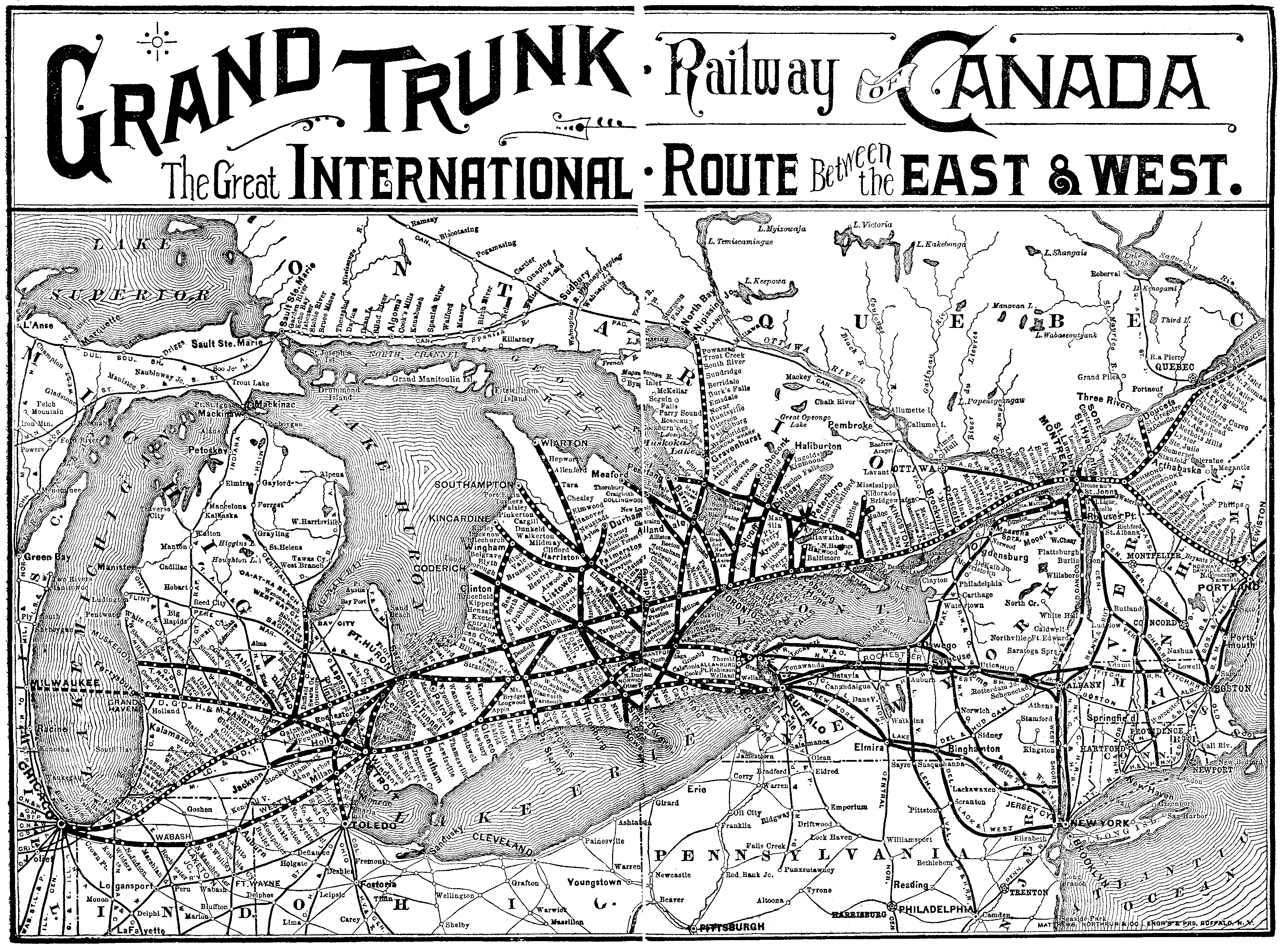Toledo & Ohio Central Railway: A Future NYC Subsidiary
Published: February 15, 2025
By: Adam Burns
The Toledo and Ohio Central Railway (T&OC) was a significant player in the development of Ohio's transportation network during the late 19th and early 20th centuries. Establishing itself during a time of rapid industrial expansion in the United States, the T&OC played an integral role in connecting key cities and facilitating commerce in the Midwest. Here's a comprehensive look at the history of the Toledo and Ohio Central Railway, highlighting its inception, operations, and legacy.
System Map (1910)
Origins and Early Development
The origins of the Toledo and Ohio Central Railway trace back to the mid-1800s, during an era of railroad fever that swept across the United States. In 1869, the efforts to form what would later become the T&OC began with several smaller, localized rail lines. Entrepreneurs and investors saw the potential of connecting central Ohio to burgeoning Midwest trade centers.
The initial segments were constructed with the understanding that connectivity would bring industrial growth and economic prosperity.
Among the earliest sections was the Atlantic and Lake Erie Railway, which struggled with financial instability and faced construction challenges. Despite these hurdles, the vision to create a line connecting the rich coalfields of southeastern Ohio with Toledo's port and industrial facilities remained strong.
Expansion and Establishment
In 1885, the disparate rail systems were consolidated to form the Toledo and Ohio Central Railway, marking a new era of expansion.
This move was spearheaded by Chauncey M. Depew, a prominent railroad executive associated with the vast Vanderbilt rail empire. The consolidation allowed the newly formed T&OC to attract more investment and orchestrate the completion of critical lines that connected pivotal industrial cities.
One of the main objectives was to establish a direct route from Toledo to Columbus, which was successfully achieved by the late 1880s. The completion of this line provided a crucial infrastructure link that accelerated the transport of coal, limestone, and agricultural products to markets in Toledo and beyond.
Operations
As the T&OC expanded, the railway developed additional lines and feeder routes to tap into the rich resource areas of Ohio. The railway became known for its "Coal Line," which was essential to the economic vitality of towns such as Columbus, Bucyrus, and Athens. The reliable transportation of coal was particularly important for fueling the growing manufacturing operations in Ohio and the broader region.
The early 20th century saw the T&OC thriving as it broadened its reach and influence, supported further by connections with larger rail systems. The railway catered to both passenger services and freight operations, balancing the needs of industrial freight transport with community accessibility.
Passenger services provided a vital means of transportation for residents, facilitating both business travel and leisurely movement, thanks to services running from Toledo through Columbus and extending further south. Furthermore, the T&OC's collaboration with other railways enabled the seamless continuation of journeys to more distant cities, thus playing a foundational role in the region's transportation ecosystem.
Challenges and Ownership Changes
The perils of running a railway during the Great Depression profoundly affected the T&OC, as was the case for many such operations nationwide. Declining revenues from passenger services due to increased automobile usage, coupled with the economic downturn, forced the railway to adapt and restructure.
In 1938, the T&OC was leased by the New York Central Railroad, one of the giants of American rail travel. This lease marked a turning point and formally integrated T&OC into larger operations, streamlining administrative and operational aspects under New York Central's purview. This transition, while providing financial stability, signaled the beginning of a gradual decline in the independence of the T&OC as a standalone entity.
Transformation
Post-World War II era transformations in transportation, including the rise of interstate highways and air travel, led to a decline in rail travel demand. The T&OC experienced diminishing relevance in passenger services, although its freight operations remained critical in some quarters.
The legacy of the T&OC was cemented by its impact on regional development. It facilitated the efficient transport of resources, promoting industrialization and urbanization in Ohio. Moreover, the cities and towns along its tracks saw significant socioeconomic changes influenced by the connectivity provided by the railway.
The lines that once defined the T&OC became part of larger railroads through mergers and acquisitions, reflective of the changing nature of the rail industry in the United States. Yet, the infrastructure laid by T&OC continues to serve in various capacities, adapted for contemporary rail uses or integrated into newer systems.
Timetables (1910)
Legacy
The Toledo and Ohio Central Railway stands as a testament to the transformative power of railways in American history. From its ambitious beginnings to becoming part of the colossal network of the New York Central Railroad, the T&OC played a key role in developing Ohio's economy and laying the foundations of modern transport infrastructure.
Despite its eventual absorption and the decline of its distinctive identity, the railway's legacy is evident in the progress and growth it spurred during the industrial era. The history of the T&OC is a microcosm of the broader narrative of American railroads—marked by innovation, expansion, challenges, and enduring impact.
Recent Articles
-
The Pleasure Dome: Accentuating The Super Chief
Feb 15, 25 12:34 AM
The Pleasure Dome was Santa Fe's version of the dome car, joining the Super Chief in 1951. Six were ultimately built by Pullman-Standard. -
Toledo & Ohio Central Railway: A Future NYC Subsidiary
Feb 15, 25 12:24 AM
The Toledo & Ohio Central was a notable Ohio system that served western parts of Ohio and also reached into West Virginia via a subsidary. It was acquired by the NYC in 1928. -
Grand Trunk Railway: Connecting Canada And The U.S.
Feb 15, 25 12:17 AM
The Grand Trunk Railway was a major Canadian/U.S. system that connected Ontario, Quebec, and northern U.S. states. It was acquired by Canadian National inj 1923






